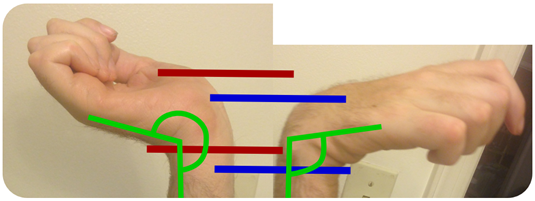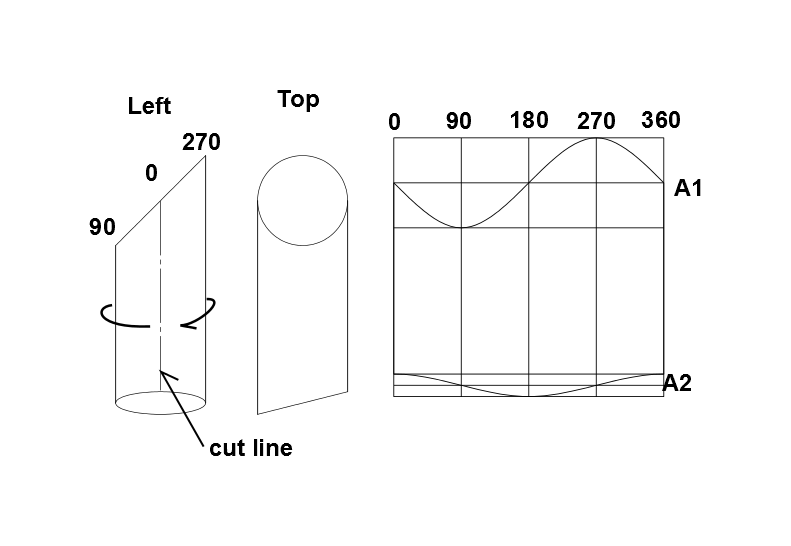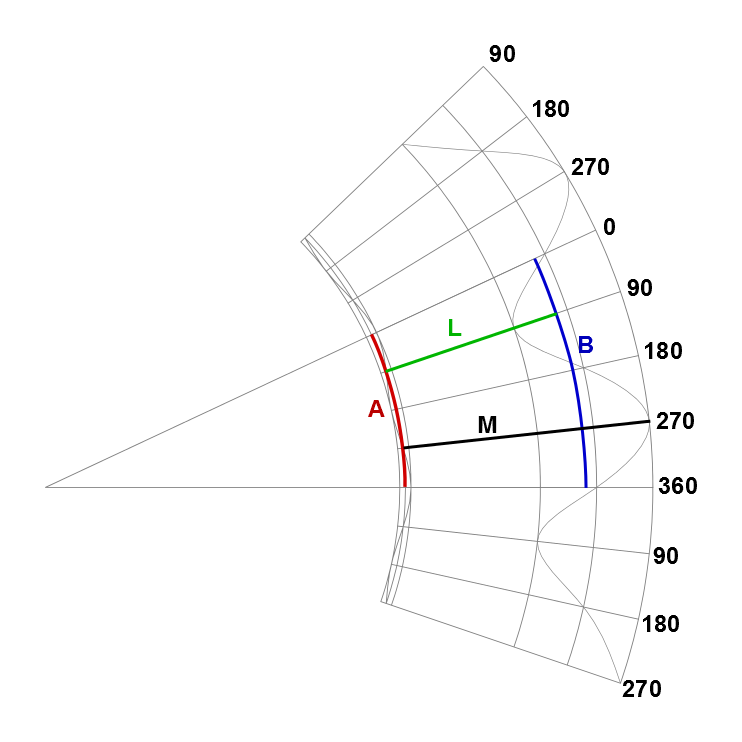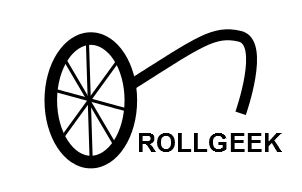Because I couldn’t just have a straight up cylindrical arm bracer, – that would be too easy – I decided I wanted to design the bracer for maximum coverage with the wrist and elbow joints perpendicular to each other (The thumbs up position). When I looked at my wrist in full extension in full flexion, I noticed, which might not be revolutionary to other people, that the wrist joint center is not at the middle of the forearm bones. It is actually pretty close to the top of your wrist. This means that when you extend your wrist (Palm flat facing forward kind of like if you were doing a push-up), your arm is actually about an inch longer then when you fully flex it. This might be why most men wear their watches with the face on the outside of their wrist (sorry the picture isn’t too great).

Now all I needed to figure out was how to make angled slices in my truncated cone pattern. My breakthrough came when I realized that by cutting a cylinder at an angle (like a katana cutting through a rolled mat), when you unroll it, you make one wavelength of the sine wave. So if I wanted to make two different angled cuts at different orientations, I would just shift the phase of the sine wave back by 90° and make the difference between the shortest and longest lengths equal to the amplitude.

My bracer was not a cylinder however so this meant that I needed to approximate wrapping this sine wave around a curve. I decided that using a computer program to create a spline with control points at the maximum, middle and minimum distances radiated around the arc center was good enough. To make the first and last control points smooth, I started and ended the spline about three control points before and after approximated sine wave stopped.

Your pattern is from 0 to 360 and bounded by the splines. remember an extra 2 inches were cut out of the inner elbow. To finish it up, offset the top and bottom edges one half inch inward on both sides and add holes for laces around every inch. And now you can see how the M measurement is used. Wasn’t it more fun back when we thought is magic? It is the curse of the wizards.
